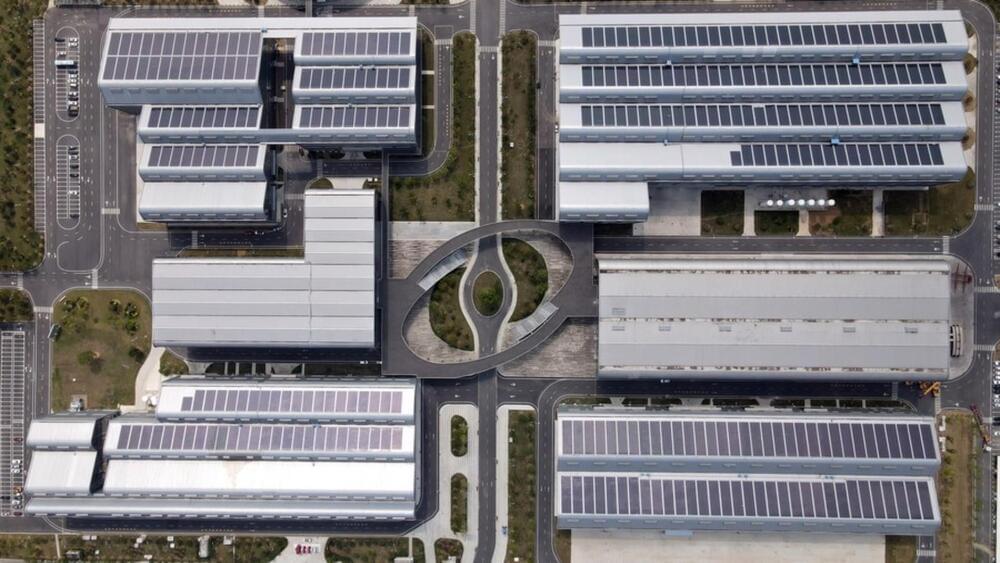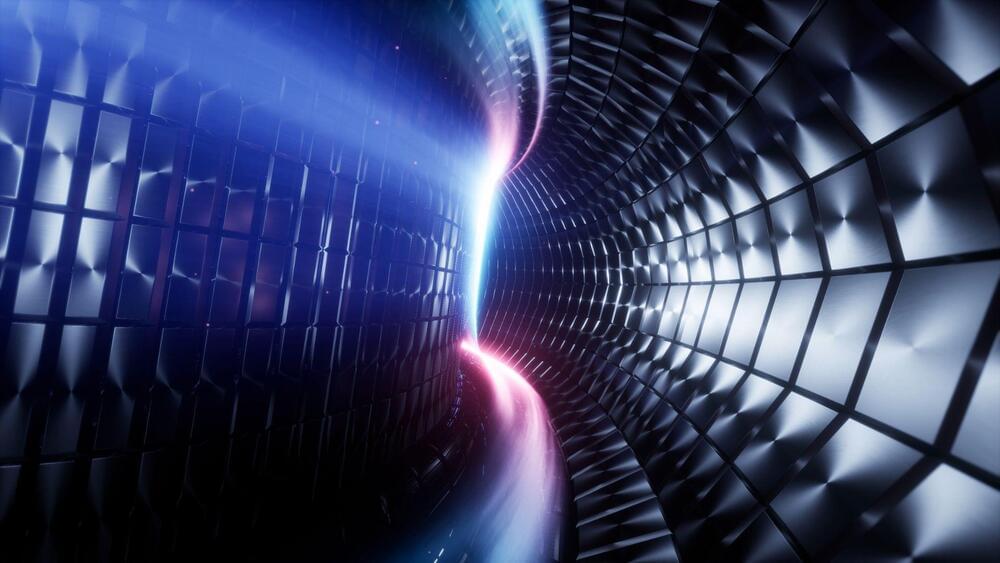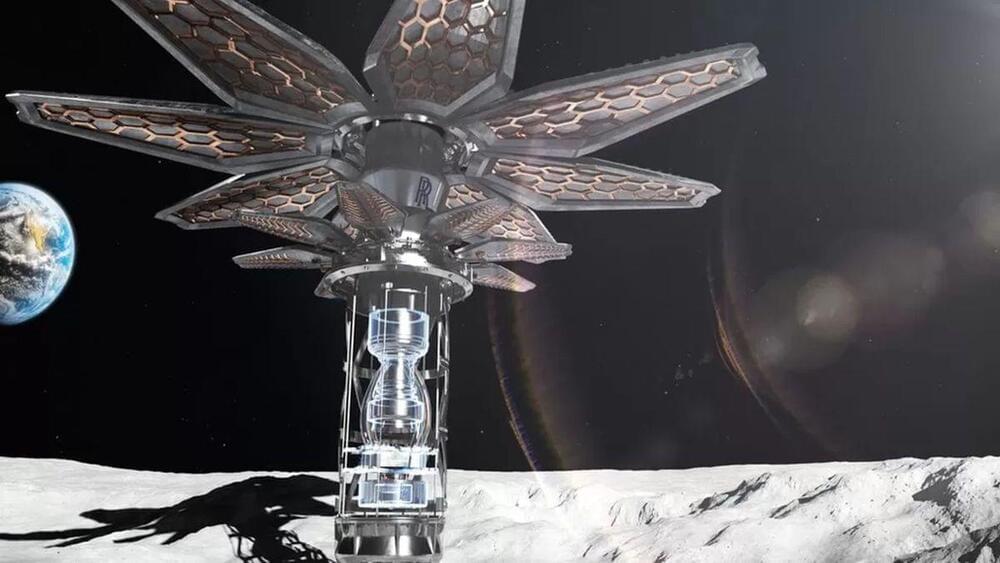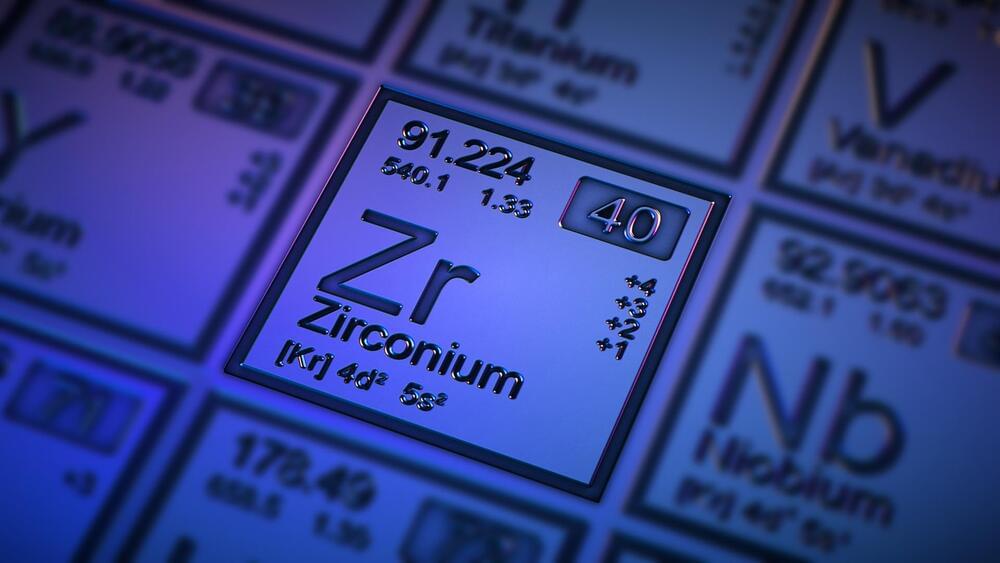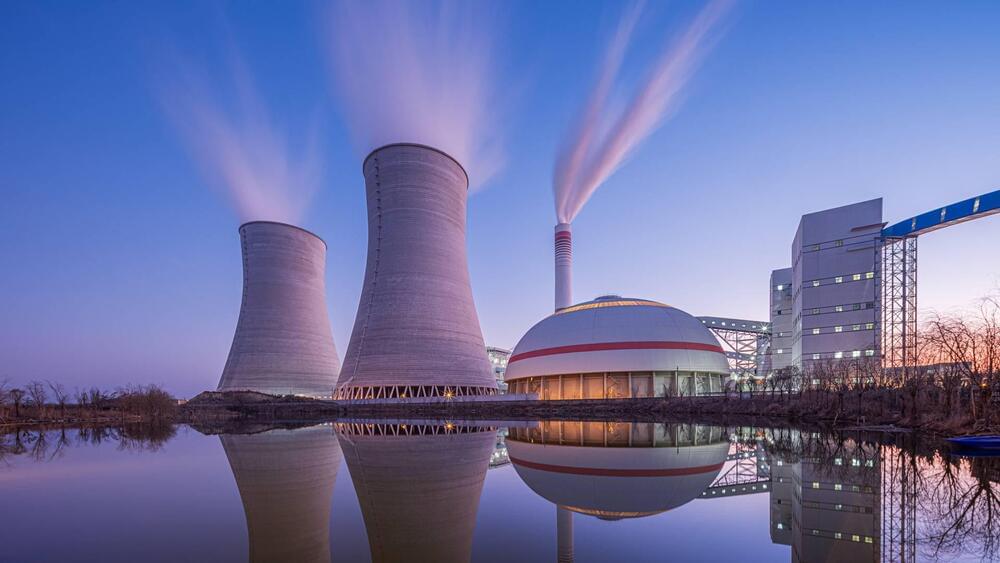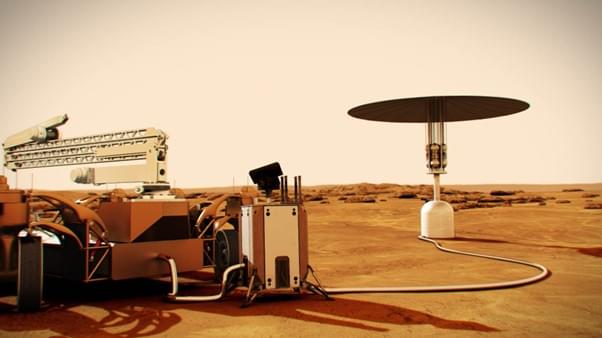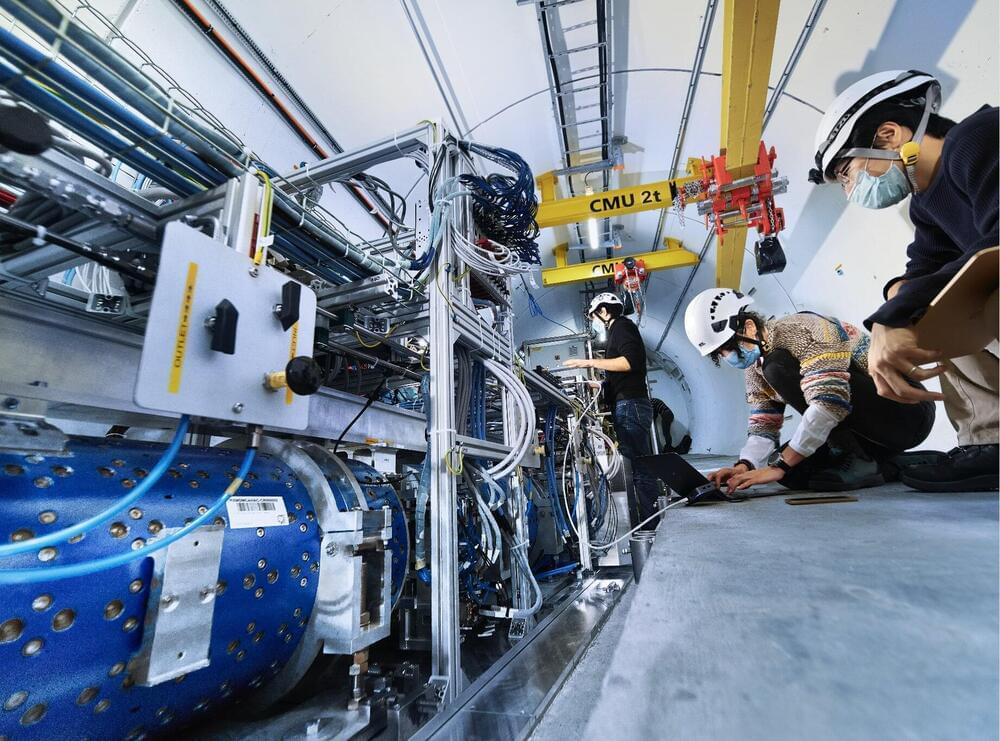Archive for the ‘nuclear energy’ category: Page 26
Sep 25, 2023
Nuclear Power: Small Modular Reactors
Posted by Dan Breeden in categories: media & arts, nuclear energy, sustainability
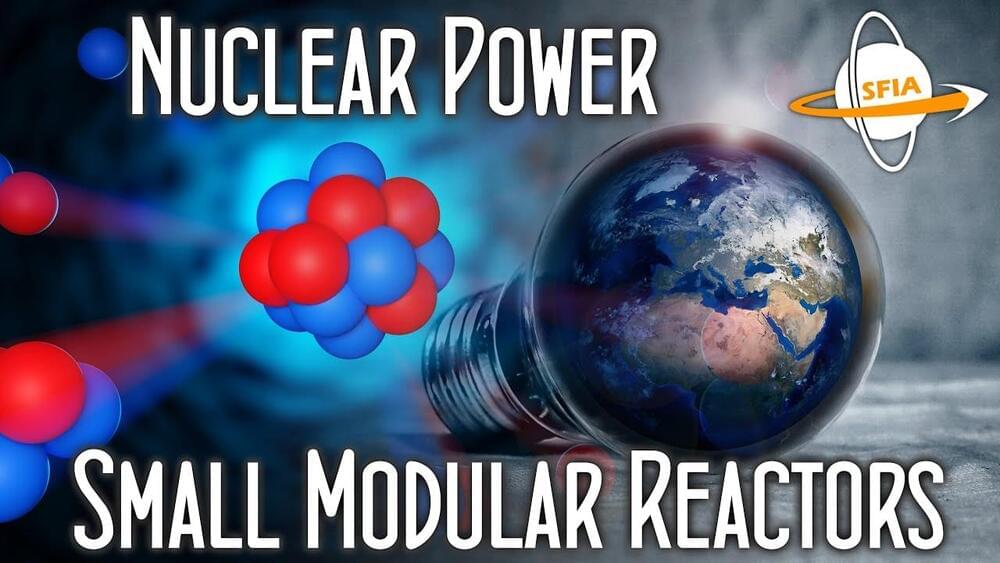
Small Modular Reactors are a promising area of nuclear technology that may be the pathway forward to cheap, safe, and sustainable energy.
Go to https://brilliant.org/IsaacArthur/ to get a 30-day free trial + the first 200 people will get 20% off their annual subscription.
Visit our Website: http://www.isaacarthur.net.
Join Nebula: https://go.nebula.tv/isaacarthur.
Support us on Patreon: https://www.patreon.com/IsaacArthur.
Support us on Subscribestar: https://www.subscribestar.com/isaac-arthur.
Facebook Group: https://www.facebook.com/groups/1583992725237264/
Reddit: https://www.reddit.com/r/IsaacArthur/
Twitter: https://twitter.com/Isaac_A_Arthur on Twitter and RT our future content.
SFIA Discord Server: https://discord.gg/53GAShE
Sep 19, 2023
Why is China’s trying to build an artificial sun?
Posted by Gemechu Taye in categories: nuclear energy, particle physics, sustainability
China is looking for a clean, sustainable energy source and is turning to the power of nuclear fusion.
What is a clean source of power that could provide clean and unlimited energy? Nuclear energy, which uses nuclear fission, comes to mind. But there is another potential source of energy that would promote sustainability – nuclear fusion.
Nuclear fusion is the opposite of nuclear fission. Fission means splitting atoms apart, which results in the release of energy. Fusion is when two atomic nuclei combine to form a heavier nucleus. Fusion is the process that powers the Sun and the stars.
Sep 15, 2023
Student-built nuclear fusion reactor to debut in Australia
Posted by Gemechu Taye in categories: nuclear energy, particle physics
The student-built Tokamak reactor will be 3 × 3 feet in size and be the first such facility built for nuclear fusion in a university.
Australia is set to become home to the world’s first nuclear fusion facility designed, built, and operated by students. The project is planned by the University of New South Wales (UNSW) but will not use nuclear fuel, a press release said.
Nuclear fusion is the process where atoms of lighter elements like hydrogen are heated up to hundreds of millions of degrees Celsius to enable their fusion under large amounts of force. The process releases large amounts of energy, which can then be used to power devices and machines.
Sep 13, 2023
New poppy seed-sized fuel pellets could power nuclear reactors on the moon
Posted by Shailesh Prasad in categories: nuclear energy, space
Scientists have developed a nuclear fuel source no larger than a seed, which NASA will test for use in future moon missions.
Sep 13, 2023
Watch the nuclear-powered flying hotel that can stay airborne for years with 5,000 passengers
Posted by Shailesh Prasad in categories: nuclear energy, transportation

A concept video of Sky Cruise, a giant flying machine that can carry 5,000 passengers and has all the luxuries of the world, has gone viral on the internet. The maker of the video claims that such an aircraft built in the future would have no carbon footprint, The Independent reported.
The concept of a floating world in itself is not new and has been described even in Jonathan Swift’s works from the 18th century, much before the Wright Brothers made their first flight. Fans of animated movies might have also come across the concept in 1986 Japanese movie, Castle in the Sky.
Sep 4, 2023
Five Interesting Facts to Know About Zirconium
Posted by Shailesh Prasad in categories: biotech/medical, chemistry, nuclear energy
Zirconium, the metal extracted from the mineral, zircon, may not be well-known, but its remarkable properties make it indispensable in nuclear power, the chemical industry, medicine and more. Since ancient times, zircon — a word believed to have originated from the Persian zargun, meaning gold-like — has been used in jewellery and decorations.
The IAEA has released The Metallurgy of Zirconium, a three-volume publication offering a comprehensive overview of the metal, its extraction, properties and applications in nuclear energy. Here are five interesting facts about zirconium.
Sep 3, 2023
Machine learning might help us finally unlock nuclear fusion
Posted by Gemechu Taye in categories: nuclear energy, robotics/AI, sustainability
What if we could replace a time-consuming analysis, an important prerequisite to judge the right mix of isotopes to use?
Why can’t we find power the same way stars do— clean, renewable, and free of radioactive waste?
Humanity’s quest for clean and sustainable energy sources has reached a pivotal moment as researchers explore nuclear fusion. Unlike current nuclear fission plants that produce energy at the cost of radioactive waste, nuclear fusion offers the promise of virtually limitless and environmentally friendly power generation.
Sep 2, 2023
NASA and DARPA to Test Nuclear-Powered Rocket for Future Mars Missions
Posted by Genevieve Klien in categories: economics, nuclear energy, space travel
In a Nutshell…
Conclusively, the partnership between NASA and DARPA to test a nuclear-powered rocket for future Mars missions marks a significant milestone in space exploration. The use of a nuclear thermal rocket engine offers several benefits including faster transit times, increased science payload capacity, and higher power for instrumentation and communication. These advancements will play a crucial role in helping NASA meet its Moon-to-Mars objectives and establish a space transportation capability for the Earth-Moon economy. Moreover, the successful demonstration of the DRACO program could have far-reaching implications for future space exploration efforts. The nuclear thermal propulsion technology could be used for not just crewed missions to Mars but also for other deep space missions, enabling humans to journey faster than ever before. This collaboration between NASA and DARPA brings together the best of both worlds, and the successful outcome of this project will be a major achievement in advancing space technology. The future looks bright for the space industry, and with more innovations like the DRACO program, we may be able to explore even more of our universe in the years to come.
Aug 26, 2023
The first observation of neutrinos at CERN’s Large Hadron Collider
Posted by Dan Breeden in categories: nuclear energy, particle physics
Neutrinos are tiny and neutrally charged particles accounted for by the Standard Model of particle physics. While they are estimated to be some of the most abundant particles in the universe, observing them has so far proved to be highly challenging, as the probability that they will interact with other matter is low.
To detect these particles, physicists have been using detectors and advanced equipment to examine known sources of neutrinos. Their efforts ultimately led to the observation of neutrinos originating from the sun, cosmic rays, supernovae and other cosmic objects, as well as particle accelerators and nuclear reactors.
A long-standing goal in this field of study was to observe neutrinos inside colliders, particle accelerators in which two beams of particles collide with each other. Two large research collaborations, namely FASER (Forward Search Experiment) and SND (Scattering and Neutrino Detector)@LHC, have observed these collider neutrinos for the very first time, using detectors located at CERN’s Large Hadron Collider (LHC) in Switzerland. The results of their two studies were recently published in Physical Review Letters.

